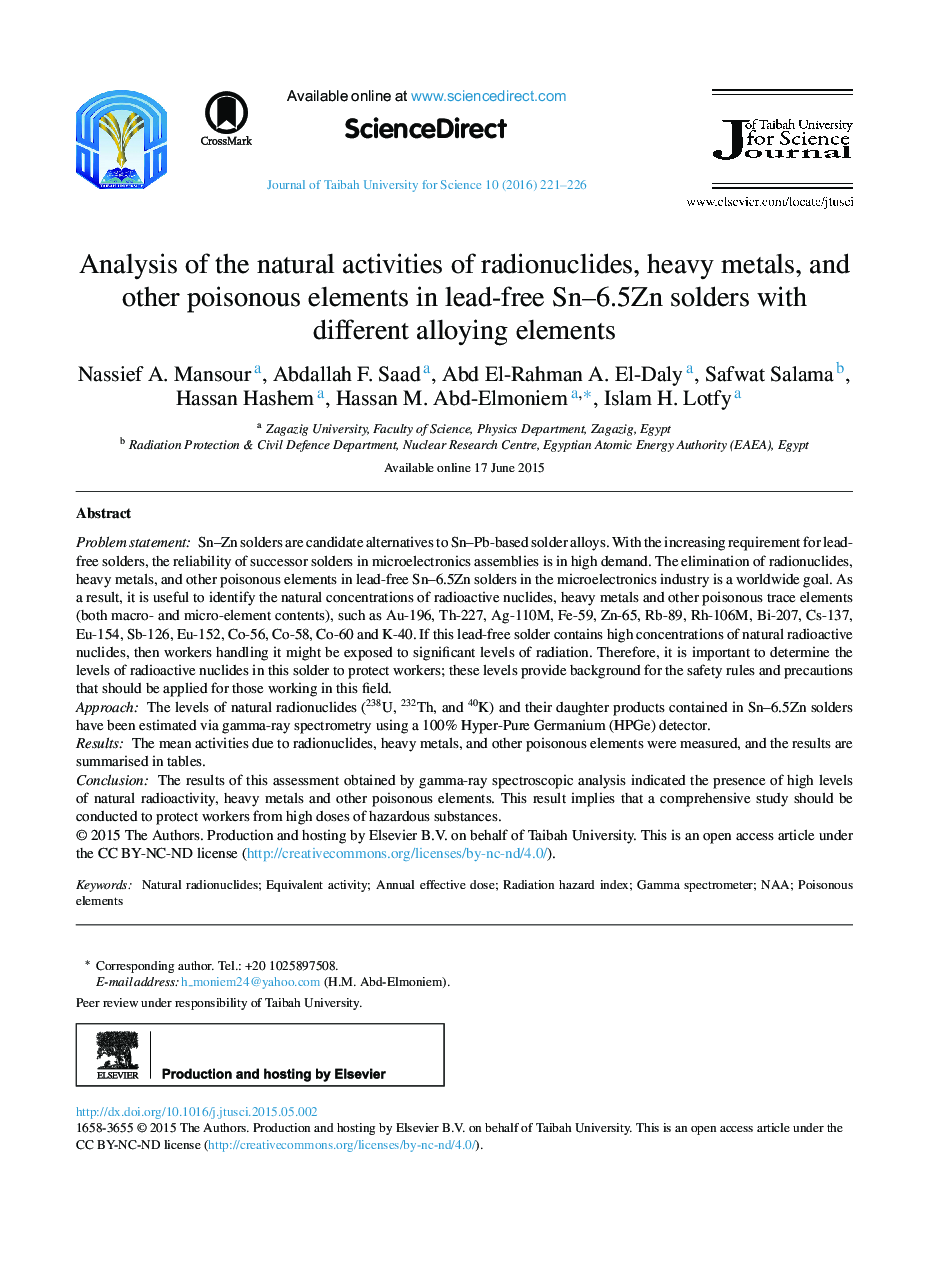| Article ID | Journal | Published Year | Pages | File Type |
|---|---|---|---|---|
| 1262975 | Journal of Taibah University for Science | 2016 | 6 Pages |
Problem statementSn–Zn solders are candidate alternatives to Sn–Pb-based solder alloys. With the increasing requirement for lead-free solders, the reliability of successor solders in microelectronics assemblies is in high demand. The elimination of radionuclides, heavy metals, and other poisonous elements in lead-free Sn–6.5Zn solders in the microelectronics industry is a worldwide goal. As a result, it is useful to identify the natural concentrations of radioactive nuclides, heavy metals and other poisonous trace elements (both macro- and micro-element contents), such as Au-196, Th-227, Ag-110M, Fe-59, Zn-65, Rb-89, Rh-106M, Bi-207, Cs-137, Eu-154, Sb-126, Eu-152, Co-56, Co-58, Co-60 and K-40. If this lead-free solder contains high concentrations of natural radioactive nuclides, then workers handling it might be exposed to significant levels of radiation. Therefore, it is important to determine the levels of radioactive nuclides in this solder to protect workers; these levels provide background for the safety rules and precautions that should be applied for those working in this field.ApproachThe levels of natural radionuclides (238U, 232Th, and 40K) and their daughter products contained in Sn–6.5Zn solders have been estimated via gamma-ray spectrometry using a 100% Hyper-Pure Germanium (HPGe) detector.ResultsThe mean activities due to radionuclides, heavy metals, and other poisonous elements were measured, and the results are summarised in tables.ConclusionThe results of this assessment obtained by gamma-ray spectroscopic analysis indicated the presence of high levels of natural radioactivity, heavy metals and other poisonous elements. This result implies that a comprehensive study should be conducted to protect workers from high doses of hazardous substances.
